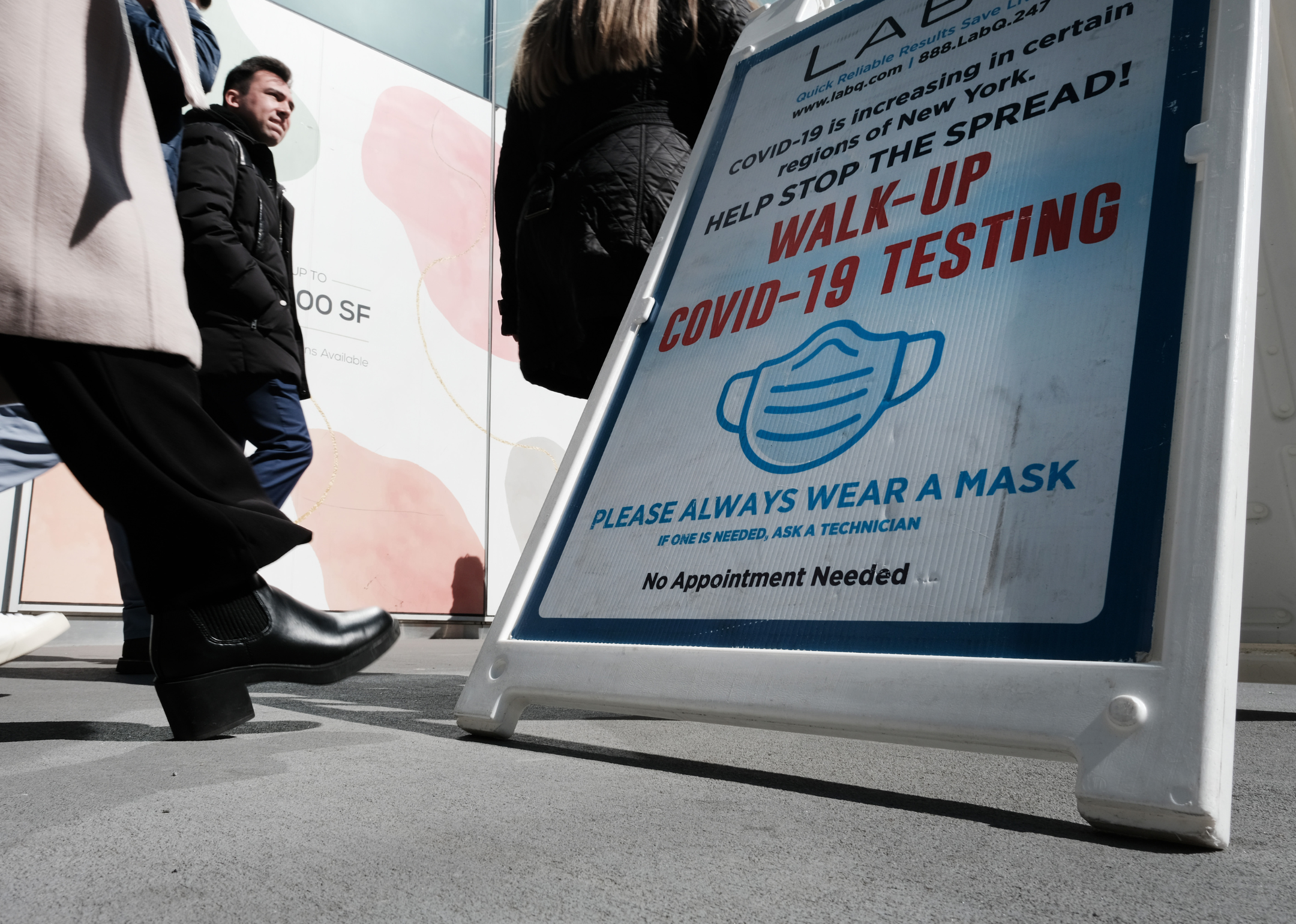Here are some key health policies that will and will not change with the COVID-19 public health emergency's end
Published 1:45 pm Thursday, May 11, 2023
Spencer Platt // Getty Images
Here are some key health policies that will and will not change with the COVID-19 public health emergency’s end
The public health emergency declared for the coronavirus pandemic expires on May 11.
The emergency declaration began in 2020, followed by various other legislative and administrative actions, allowing the federal government to waive or modify rules and expand the health care system’s capacity to provide care and coverage for all Americans during the worst pandemic in more than a century. Experts agree that given the current state of the pandemic, this expanded capacity and coverage is no longer necessary. Some policies will end immediately, and others will be phased out over time.
Stacker identified some of the major health policies applicable to the general public that will be affected by the public health emergency’s end. To learn more about how specific health insurance waivers and other flexibilities enabled by the COVID-19 emergency declaration will be impacted, see the Department of Health and Human Services fact sheet.
Testing will change
Free at-home tests will no longer be available through the government’s COVID-19 website after May; however, people who are uninsured will still be able to get tested through the CDC’s Increasing Community Access to Testing program free of charge.
During the public health emergency, insurers were required to reimburse up to eight antigen tests per person every month. After May 11, Americans with traditional Medicare or private insurance will not be guaranteed free at-home tests, though some insurers may continue to cover them voluntarily. While PCR tests ordered by health care professionals will still be covered under most insurance plans, there may be a cost-sharing component for some people.
Rapid tests will continue to be covered for people enrolled in Medicaid or the Children’s Health Insurance Program through Sept. 30, 2024, after which states may limit the number of tests provided or impose cost-sharing policies.
Uninsured people in states and territories that adopted temporary Medicaid coverage will no longer be able to receive free coronavirus testing services after May 11. At-home tests may still be available at free health clinics, community health centers, public health departments, or other local organizations for people who cannot afford them. The cost for a box containing two tests is about $25.
Vaccination will not change
Vaccines will remain free for everyone for as long as federally purchased vaccines last. Providers of federally purchased vaccines cannot charge patients or deny vaccines based on insurance status.
Even after the federal vaccine supplies run out, likely in the fall, vaccines will continue to be free to the vast majority of insured people. However, private insurers will no longer be required to reimburse for out-of-network vaccinations. The Biden administration also announced a $1.1 billion program to ensure access to vaccines and treatment through December 2024 for the uninsured.
Treatment costs will change
The U.S. government still has supplies of COVID-19 antiviral treatments such as Paxlovid. Doctors administering federally acquired treatments must provide them for free to people regardless of their insurance status.
When the federal supply of treatments runs out, manufacturers will determine medication prices, and the price individuals pay for the drug will depend on their insurance. Those not on Medicaid will likely pay out-of-pocket just as they would for other prescription drugs. People with Medicaid will continue to have access to Covid-19 treatments at no cost until Sept. 30, 2024.
All FDA-allowed medicines used to treat COVID-19 will be covered through Medicare Part D, affecting just under 50 million older Americans.
Telehealth and virtual care will likely not change
Major telehealth flexibilities will likely not be affected. The majority of current Medicare telehealth flexibilities utilized throughout the public health emergency, particularly by patients in rural or health care shortage areas, will remain in place through December 2024. Waivers and provisions allowing high-deductible health plans to offer telehealth before patients hit their deductible will remain in place.
During the public health emergency, HHS temporarily waived penalties for telehealth providers using technologies that didn’t comply with federal privacy and security rules. After May 11, telehealth services will be restricted to “HIPAA-compliant” technologies.
Data reporting and surveillance will change
For the last several years, medical laboratories have been mandated to report the results of coronavirus tests and vaccine administration to the CDC, which has helped gauge the severity of the pandemic nationwide. That lab reporting requirement expires with the public health emergency.
Hospitals will still be reporting data but on a more limited scale. Reporting of positive test results, the number of hospitalized COVID-19 patients, and the stock of certain medical supplies will continue through the end of April 2024.
Emergency use authorizations will not change
The FDA’s ability to authorize products, including tests, treatments, or vaccines for emergency use, will not be affected by the ending of the public health emergency.
Additionally, the agency’s ability to use emergency authorizations in the future will not be affected, including for an updated coronavirus vaccine that’s likely to be used in the fall.
![]()






